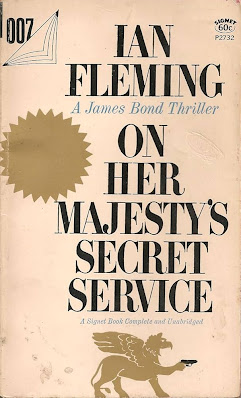The Man With the Golden Gun is Ian Fleming's final novel. It was written in the first months of 1964 when Fleming was suffering from the effects of his serious heart ailment. His illness was the product of stress, family heredity, a life of heavy drinking, and a 70-cigarettes-a-day habit. The book was published posthumously in the spring of 1965.
With the exception of the 1966 publication of a collection of 3 previously published short stories, The Man With the Golden Gun represents the end of Fleming's James Bond books. As I read through the final chapters, I could not help but feel sadness as if I was still mourning Fleming's passing.
Maybe I was.
By the way, as with so many Bond movies, don't expect the book to be like the movie. There is no arcade-like killing game, no laser and Nick Nack, the creepy little guy played by Hervé Villechaize.
The last real James Bond novel (I don't count the subsequent Bond novels written by others), begins with Bond, brainwashed by the Russians, attempting to kill M. After Bond is treated, M gives Bond a shot at redemption by sending him on an assignment to kill Francisco Scaramanga, the world's most dangerous assassin, also know by his weapon of choice -- a golden gun.
The trail of Scaramanga takes Bond back to Fleming's favorite location—Jamaica, the place where Ian Fleming wrote all of the Bond books at his beloved winter home, Goldeneye. Bond ingratiates himself to Scaramanga, who calls on Bond to help with a meeting of mob figures and Russian agents. The meeting leads to a showdown between Bond and Scaramanga on a narrow gauge railroad crossing a dense swamp.
The book draws the reader in, as do all of Fleming's works. It's a fitting final adventure although it will leave the reader wanting more, just as it did 60 years ago. It is a MUST READ for any Bond fan.













